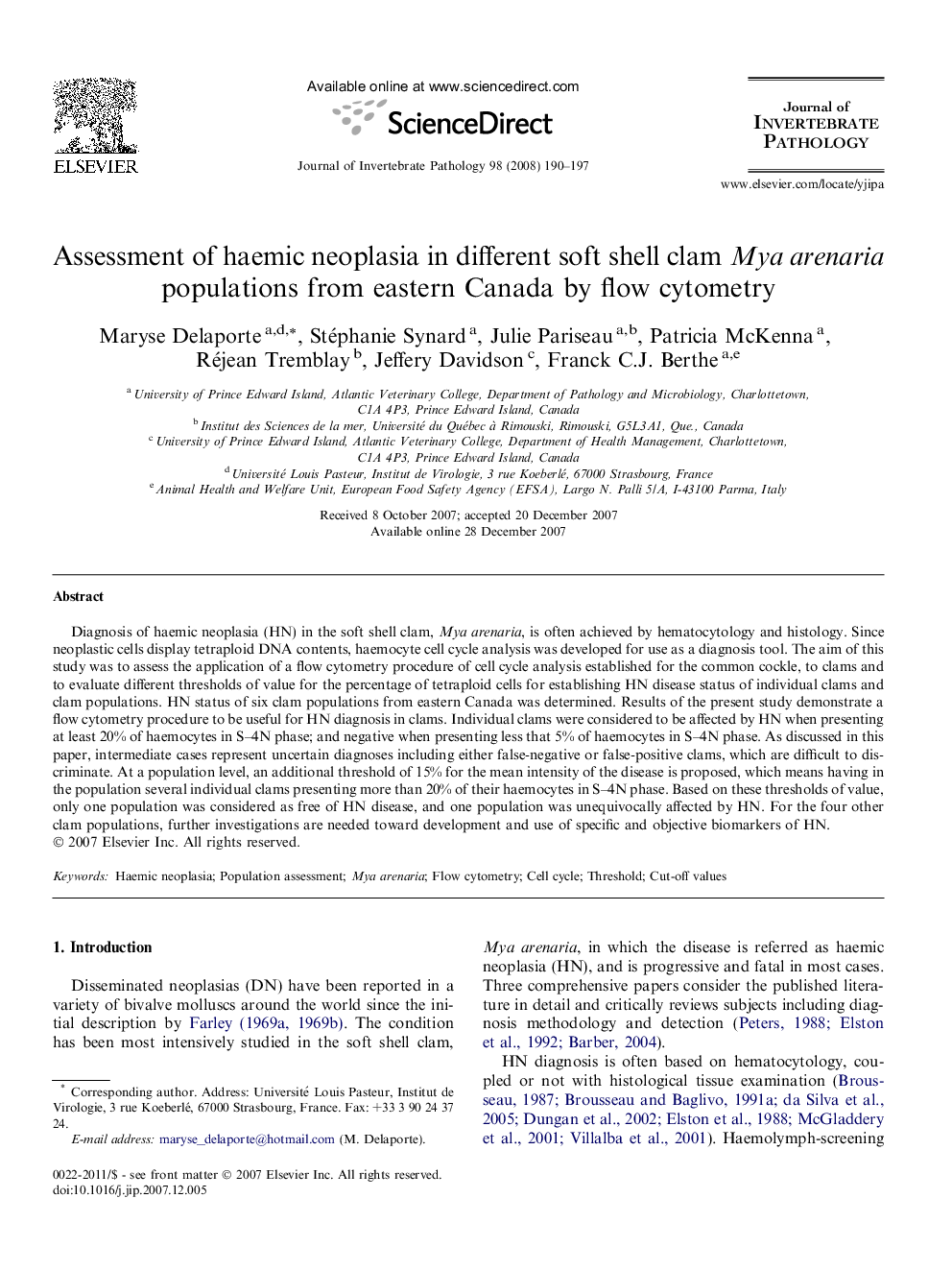| Article ID | Journal | Published Year | Pages | File Type |
|---|---|---|---|---|
| 4558548 | Journal of Invertebrate Pathology | 2008 | 8 Pages |
Diagnosis of haemic neoplasia (HN) in the soft shell clam, Mya arenaria, is often achieved by hematocytology and histology. Since neoplastic cells display tetraploid DNA contents, haemocyte cell cycle analysis was developed for use as a diagnosis tool. The aim of this study was to assess the application of a flow cytometry procedure of cell cycle analysis established for the common cockle, to clams and to evaluate different thresholds of value for the percentage of tetraploid cells for establishing HN disease status of individual clams and clam populations. HN status of six clam populations from eastern Canada was determined. Results of the present study demonstrate a flow cytometry procedure to be useful for HN diagnosis in clams. Individual clams were considered to be affected by HN when presenting at least 20% of haemocytes in S–4N phase; and negative when presenting less that 5% of haemocytes in S–4N phase. As discussed in this paper, intermediate cases represent uncertain diagnoses including either false-negative or false-positive clams, which are difficult to discriminate. At a population level, an additional threshold of 15% for the mean intensity of the disease is proposed, which means having in the population several individual clams presenting more than 20% of their haemocytes in S–4N phase. Based on these thresholds of value, only one population was considered as free of HN disease, and one population was unequivocally affected by HN. For the four other clam populations, further investigations are needed toward development and use of specific and objective biomarkers of HN.
